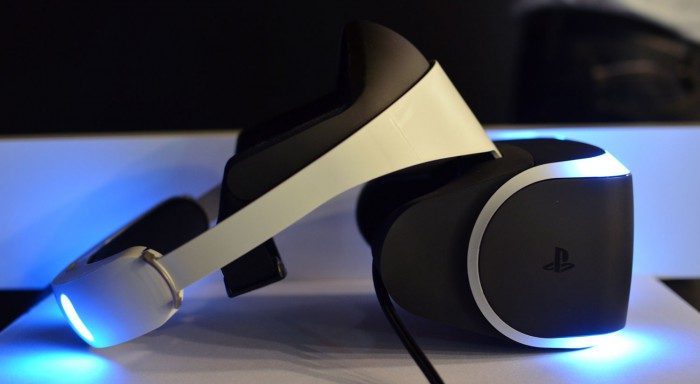No Consumer Version in 2014; a Calibration-optional Experience When It Arrives
With regards to a Project Morpheus release date for the PS4, Sony so far has only confirmed that it won’t be happening in 2014. “…past that, I’m not sure what the schedule is,” Mikhailov said.
“…a big part of the console experience is that it just works, and that’s what we want to do.”
When it does hit, the company wants it to be easy to use.
“…a big part of the console experience is that it just works, and that’s what we want to do,” said Mikhailov. “Currently there isn’t [calibration] right now; we’ve really focused on making sure the headsets work, essentially of the box—in our perspective essentially out of the factory—in the factory there’s a calibration process and then we don’t want the user to have to get home and then first thing you do is [a complicated calibration process]… The Morpheus actually supports a very wide range of IPDs for your optics, so it shouldn’t be an optical issue… we’re not planning to have adjustable optics for example. On the software side, to render the game, it does help if you can render it at the user’s correct IPD. Currently we’re using an average IPD of I think 63.5mm…”
Although the company wants the out-of-the-box experience to be simple, there may be room for optional calibration for advanced users to enhance the experience.
“There’s methods to do [IPD calibration in the headset], so I think that’s something that advanced users can do because I think the majority of people will actually be ok with an average IPD… but if you can go into your profile and say ‘hey I want to improve my experience’ then [the system] can say ‘tell me something about yourself’ like ‘let’s do this eye thing and we’ll store it in your profile’ and it’ll be better from then on,” said Mikhailov. “There’s a few other things like that… if we can know your arm length we can make the skeleton tracking better… stuff like that, we can auto-calibrate a lot of it on the fly to a first approximation and that’s quite good for the general audience, but if you really want to get super tight, then yeah, some user-calibration could help.”
PlayStation 4 Camera as a Single Vision Source for Multiple Inputs
“…if you ever use a system that has different tracking for head and hands it’s actually non-trivial to line the two systems up…”
Although the PlayStation 4 camera preceded Morpheus, Sony is betting that it is the ideal system for VR input.
“I think the big advantage of that system is that it allows us to track the Move [motion controller] and the Dual-Shock 4 [PlayStation 4 controller] and the HMD all from the same viewpoint and that’s actually quite important because if you ever use a system that has different tracking for head and hands it’s actually non-trivial to line the two systems up, so you can’t ever quite get that feeling that you’re hands are in the right place,” Mikhailov said. “To get it right you need to start calibrating the two systems which is quite a technical feat and not something we want to put our users through. So I think there’s a lot of advantages to using the standard PS4 camera to track the Dual-Shock 4, the standard Move controller, and the HMD, just kind of put them all in the same camera space.”
When asked whether or not Sony seeings themselves with tracking fidelity down to the limbs or fingers in the near future, Mikhailov notes that the camera technology is not quite ready and that having buttons and something in your hand is still good for game design.
“I mean [limb and finger tracking] is interesting but as a technology person I can tell you it’s really difficult… the cameras right now are just really not at a level where you can get that sort of fine-level control,” he said. “…buttons are still quite nice because when you have to hit a menu or switch weapons its quite nice to have a button… and even just holding something is good, so if you have a [virtual] racquet or sword you want to feel like you’re holding something, not just waving in the air…”
Our thanks to Anton Mikhailov for taking the time to speak to us. It’s great to see Sony allowing its engineers the freedom to discuss Project Morpheus’ gestation and development with such openness. Morpheus is a promising piece of VR technology that has the potential to open VR to audiences that Oculus won’t be able to cater for in the near future. We look forward to seeing how it evolves.








